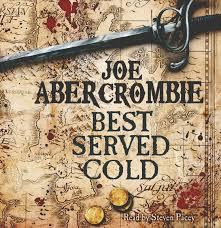Andy Peloquin's Blog, page 7
August 13, 2018
When Fictional Situations Solve Real Life Problems
Many of you have followed along in my writer’s journey for a few weeks, months, or even years now. Most of the time, all you’ll see is the excitement that comes with being an author. Things like:
Awards
Excellent reviews
Exciting news of releases
Happy updates on progress
But there’s a lot that people don’t see behind the scenes.
Well, like all artists, I get hit with sometimes-debilitating self-doubt.
Last week was the perfect example…
I was halfway through writing Trials of Stone (Heirs of Destiny Book 1), but suddenly I was hit by an overwhelming wave of self-doubt.
I’d outlined the story, yet as I wrote, I realized it was feeling disorganized to the point that I felt the story was starting to SUCK.
All of a sudden, the novel I was so excited about just the day before had become a looming giant, something I was dreading facing.
Yes, you guessed it: I didn’t get any writing done on the story that day!
Self-doubt is the artist’s curse, and it can be a huge de-motivator. I found myself struggling to retain my enthusiasm for what I know is an awesome story all because of some minor detail I couldn’t get right.
Thankfully, I’ve encountered it enough times that I was able to cope with it. Instead of forcing myself to write, I spent the PM tightening up my outline. That way, when I sat down to write again the next day, I knew I’d proceed with confidence because I took time to work through that self-doubt.
But that “next day”, as I sat down to write, I found one of my characters dealing with that very same issue I was struggling with. She (Issa) is being pushed to her breaking point in her training to become a Keeper’s Blade, one of her city’s elite warriors.
She nearly cracks, but sneaks out of the Blades’ base, the Citadel of Stone, to visit her grandmother. But instead of commiserating with Issa, the grandmother gives her what she really needs:
Aleema gave her a soft smile. “When you were young, barely five years old, your Saba and I would take you to an olive grove just outside the city. There was one tree, little more than a stump with a few low branches, that you determined to climb. Time and again you fell from the tree, sometimes so hard we worried you had hurt yourself. But every time, you bounced up, that stubborn look on your face, and ran at the tree again. We tried to help you, even tried to stop you, but you refused to give up. Do you remember what happened the day after your sixth nameday?”
Issa shook her head. She had little more than a faint memory: bright sunlight dappled through tree branches, the crunch of dried leaves underfoot, and the comforting presence of her grandparents.
“You climbed the tree, nechda.” Aleema placed a hand on Issa’s. “You sat on the highest branch in the tree, looking like the Pharus perched on his throne. You had triumphed finally, after all that effort. Then you did the one thing neither of us expected.”
“What?” Issa asked.
“You set about climbing another tree.” Aleema’s eyes brightened, a broad smile on her beautiful face. “That is how you have always been, granddaughter. Stubborn as a farmer’s mule, yet as unstoppable as a runaway bull.” She grasped Issa’s hands in hers. “Nothing can stop you, nechda. The only one who can stop you is you. You only fail when you stop fighting.”
That story (kid climbing a tree over and over no matter how many times they fail) is the one my mother LOVES to tell about me as a young child.
(Yes, I did eventually manage to climb the tree!)
That story just fit so perfectly here, and it was perfect how the real-life example translated into a fictional setting helped to solve my real-life problem.
I’ve found stories have a funny way of doing that…
We all get hit.
Self-doubt can stop you in your tracks and make you second-guess yourself. The key to getting over it: take a beat, approach the situation logically instead of emotionally, and remember that it’ll all work out.
Often in the form of a story…
So many times, the stories I write have helped me work through issues in my personal and professional life–relationships with my siblings, spouse, kids, friends, parents, and others.
In the end, being able to work things out on the page often helps me work things out in my head or in my own life.
Fiction does more than just mirror real life–it enhances it in every way!
The post When Fictional Situations Solve Real Life Problems appeared first on Andy Peloquin.
July 17, 2018
17 Fantasy Anti-Heroes That Kick Serious Ass
What is it about fantasy anti-heroes that makes them so much fun to read?
Maybe it’s the fact that they don’t have to worry too much about morality or “crossing a line”—they’re the sort that don’t bother with lines!
Maybe it’s that their exploits are always filled with lots of action, violence, and intrigue—the stories we love to dive into!
Maybe it’s because they give us a chance to experience life outside all the rules and strictures of polite society—a bit of harmless wish fulfillment for our innate aggressive natures.
Whatever the case, there’s no denying it: fantasy anti-heroes are, without a doubt, some of the most enjoyable characters in fiction. PERIOD!
With an anti-hero, you can never really predict what they’ll do or which way their story will go, so it adds an element of “What the hell is going to happen next?” If you like heart-pounding, page-turning, non-stop novels, you can always bet that’s what you’ll get with fantasy anti-heroes.
Want a few of the best?
(I had so much fun with the Fantasy Assassins post I had to do it agagin!)
Behold, a veritable whos-who of the ass-kickingest anti-heroes in fantasy fiction:
Conan the Barbarian, Conan books by Robert E. Howard
A grim, hulking Cimmerian with the agility of a panther, Conan was born on a battlefield and raised to war. His lust for travel and adventure takes him across all the kingdoms of the Hyborian Age, leading him to battle evil wizards, terrible monsters, and even ancient gods. The strength of his arm and his unbounded courage are all he needs to bring him through even the toughest battle alive.

His deeds of heroism are usually done out of a desire for gain or to survive impossible odds. He is also strangely chivalrous, with a strong drive to save damsels in distress—often sacrificing his own desires to do so.
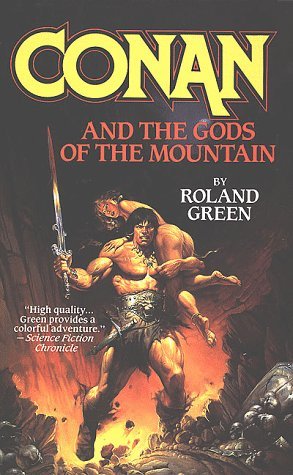
His nature is to subvert and supplant (the usually evil) leaders of the war bands and criminal crews he runs with, but he is always a magnanimous and respected leader in his own right.
Logen Ninefingers, The First Law by Joe Abercrombie
The Bloody Nine, so named for the missing finger on his left hand, is a physically imposing and badly scarred brute of a barbarian from the icy North. He is a force of nature, quick-tempered, fierce in battle, and lives a lust for blood that leads him to fall into murderous blackout rages—rages that can lead him to kill friend and foe alike.

He is also an expert warrior, cunning in battle and strategy, and proficient in myriad weapons beyond his sword and the many daggers he carries. Thoughtful, even philosophical at times, he is a genuinely decent person when he is not in a murderous rage.
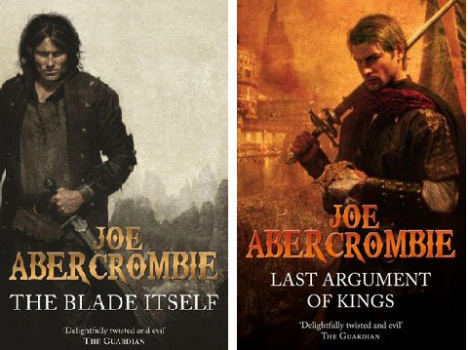
Some believe the blackouts are his manifestation of magic, or that the magic takes control of him. Yet, despite his attempts to be a better man, he can never truly escape the violence within him.
Locke Lamora and Jean Tannen, The Gentlemen Bastards by Scott Lynch
You can’t have one without the other! Locke, master thief, confidence artist, false-facer, and king of deception. Jean, thief, scholar, gentleman, and deadly-efficient killer with his hatchets, the Wicked Sisters. Together, they are the Gentlemen Bastards, the cleverest sons of bitches to ply their thieving trade in the cities Camorr, Tal Verarr, and Karthain.

Locke is daring, cunning, assertive, and a wild risk-taker—his silver tongue and rapier wit lead him into trouble, but he’s always able to finagle a way out. Stubborn, arrogant, and brazen beyond belief, he will face up to any challenge no matter how daunting.

Jean is quieter, softer-spoken, with a passion for romance novels, but woe to those who threaten the ones he loves. His fiery temper and merciless nature make him a terrifying foe—and has earned him a reputation even among the thugs, thieves, and criminals of the underworld.
Jarlaxle Baenre, Forgotten Realms by R.A. Salvatore
Drow mercenary, swashbuckling leader of the Bregan D’aerthe, Jarlaxle of House Baenre is unique among the dark elves: he wields considerable power in the matron-ruled society of Menzoberranzan.

Slender and handsome, he wears bright and gaudy colors, high shoes, a feathered top hat, clacking bracelets, and an ornamental (and magical) eye patch. He is quick-witted, clever, calm, and graceful, yet an opponent that no one in the Underdark or the World Above would face without second thought.

At a young age, he determined that the only way a male drow could survive would be to operate outside drow society. Thus, he formed his company of exiled and believed-dead drow to aid him in his back-stabbing and double-dealing. His insatiable curiosity and desire to know everything remain undimmed despite his cynical nature, and his light-hearted, gambling nature conceals a frighteningly intelligent mind. His skill with his blades—magical and mundane—rival that of Artemis Entreri and Drizzt Do’Urden.
Elric of Melniboné, Elric of Melniboné by Michael Moorcock
With skin the color of a bleached skull, milk white hair, slanting and moody crimson eyes, lean and lithe, Elric is the last emperor of Melniboné, a stagnating civilization threatened by humans.

Though he is physically frail, he takes special herbs to survive. He is also an accomplished summoner and sorcerer, calling upon a Duke of Hell to accomplish his tasks.

When he finds Stormbringer, the enchanted sword confers upon him strength and skill, but demands the souls of intelligent beings. Elric grows dependent on Stormbringer just as he once depended on drugs, and that addiction to power is what ultimately leads to the destruction of Elric’s life, but also the erasure of his own soul.
The Hunter of Voramis, Hero of Darkness by Andy Peloquin
A legendary assassin among the people of his city, the Hunter kills without hesitation or mercy—but only those who deserve it. Big men, little men, strong men, weak men, cowards and brave fools, heroes, villains, rich men, beggars—all are his prey. His dagger, Soulhunger, consumes the souls of his victims, feeding him power and healing his wounds.

He is immortal and possesses superhuman speed, strength, and stamina. He is incredibly skilled with a variety of weapons, though he prefers a handheld crossbow (tipped with poison) and his sword-and-dagger combination. He wears masks of alchemical “flesh”, which allows him to adopt various disguises to hide in plain sight.
He is fiercely protective of those who cannot protect themselves. He has taken beggars, lepers, and outcasts into the building he owns, and he feels responsible for caring for them in his own way. He also has a firm, if cynical, sense of right and wrong, and will fight to his last breath for any cause he believes is truly right. He has become an assassin out of necessity, for the voice of Soulhunger echoes in his mind and drives him to kill. Yet he fights its demands and refuses to be ruled by his “inner demons”.
Kellus, The Prince of Nothing by R. Scott Bakker
Anasûrimbor Kellhus is a warrior and philosopher with sorcerous abilities and a presence charismatic enough to convince anyone to follow him. A prodigy raised in a fortress lost to time, he is a master of the ways of limb, thought, and face.
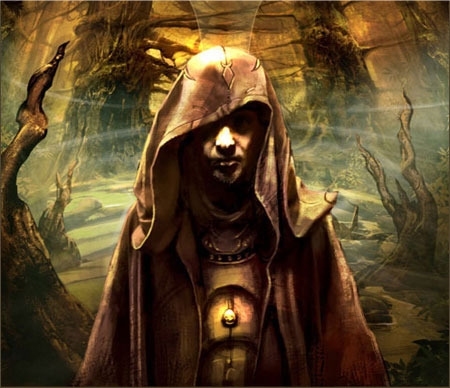
Tall and strong-featured, he is the model of a “messiah”—a charade that is completed by his extraordinary powers of persuasion, manipulation, and deduction. He is also believed to be among the most powerful wielder of the Gnosis on the Three Seas.

His sorcerous powers and Dunyain abilities give him the ability to bend anyone to his will: from the lowest-born beggar to barbarian chieftains to emperors. He lies his way into a position as a Prince by claiming he dreams of a Holy War, then one by one uses his powers of verbal and mental manipulation to pull every warrior, general, king, and emperor in the Crusade under his sway, until he finally becomes the Warrior-Prophet and leader of the Holy War, and ultimately High King and Aspect-Emperor of the Three Seas.
Shorn, Immortality and Chaos by Eric T. Knight
Shorn is an alien from a warrior race, among his people’s greatest warriors, and exiled to the world of Atria for the crime of showing compassion to his people’s mortal enemies. He, like his people, are significantly larger than humans—he stands a head taller than the tallest person and is half again as broad—making him a fearsome warrior, to the point where fighting people presents no real challenge to him. His power and speed give him the ability to cut through human fighters like a force of nature.
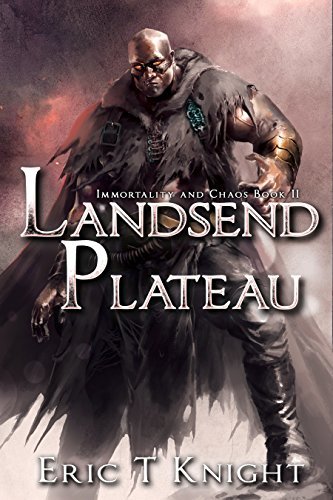
His disdains the people who take him in, all his focus on the life he has lost, the family he will never see again. But he is not able to completely close his heart and when their village is attacked by minions of the dread Guardian Kasai, he saves them by wreaking havoc on the attackers.
Tormented by his self-loathing, the gratitude of those he saved is intolerable to Shorn. He is determined to find a worthy foe, one powerful enough to give him the warrior’s death he craves. Yet his plans are to be foiled—a healer saves him and binds him to a life-debt, one he is bound to repay before he can die.
Raistlin Majere, Dragonlance by Margaret Weis and Tracy Hickman
Golden-skinned, frail and sickly, with hourglass eyes that enable him to see the effects of Time on all things, Raistlin Majere is a Wizard of High Sorcery.

He serves the Red Moon of neutrality, his skills in magic are nearly unparalleled on the continent of Ansalon. That gives him a superiority complex that only adds to his resentment and jealousy of his physically fit brother and condescension towards all around him—all of which lead him to ultimately don the Black Robes of evil wizardry.

Raistlin has killed his mentor, stolen books of evil magic, destroyed the ancient city of Palanthas, and almost eviscerated Takhisis, goddess of evil. The only way he will ever truly feel at peace with himself is if he becomes the most powerful being, a compensation for his physical weakness. He also identifies with other physically-weaker races and people, those mistreated because of their weakness or disability.
Geralt of Rivia, The Witcher by Andrzej Sapkowski
Though he is driven by a heroic nature, Geralt’s disfigured, scarred face causes people to fear him. His role as a Witcher, a monster hunter-for-hire, leads him on an endless quest to eliminate loathsome creatures and hideous beasts. Magic and mutation experiments gave him greater speed, stamina, and strength, yet turned his hair white.

He is known by many names: White Wolf, Gwynbleidd, and the Butcher of Blaviken. His nature is dour and cynical, his personality threatening, yet his outward coldness hides a fierce loyalty, sparkling humor rarely shown to any but the few he trusts, and a compassion for suffering.

World-weary and driven by remorse, he is not immune to the temptations of the world or the burdens of loss, which have broken him more times than he cares to admit.
Jorg Ancrath, The Broken Empire by Mark Lawrence
At 9 years old, after a childhood of mental abuse by his cruel father King Olidan, Jorg watched his mother raped and killed and his younger brother murdered by his Uncle. Helpless, trapped in a thorn bush and bleeding out, young Jorg Ancrath vowed vengeance on all his enemies.
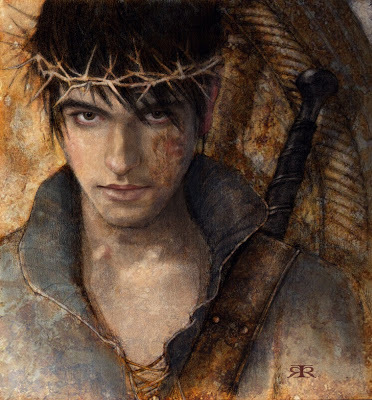
Charming, witty, yet utterly amoral, Jorg has a quick, fiery temper and a cruel disposition—albeit, never cruel for cruelty’s sake. He is creative, finding ingenious ways to win against impossible odds, and refused to fight by “fair” or “honorable” standards.

His weapon of choice is a longsword, and he is deadly with the blade, but over time his magical and necromantic skills grow until they are sufficient to defeat large armies.
Kane, Bloodstone by Karl Edward Wagner
Son of Adam and Lilith, Kane is a powerful, left-handed swordsman cursed to wander the world for all eternity as punishment for strangling his brother. He is vulnerable to wounds and can be killed, yet he heals impossibly quickly.

An accomplished sorcerer and peerless warrior, it is said men cannot hold the gaze of his piercing blue eyes long before they see his true nature: a butcher, killer of men.

He is unconcerned with human morality, for no relationship or philosophy can last more than a fraction of his eternal lifetime. Devious, intelligent, cynical, and reflective, he is a sort of man who can rip an enemy apart with bare hands yet master any situation intellectually. His weariness with his immortality drives him to seek death or a meaning to his existence.
Rincewind, Discworld by Terry Pratchett
Failed wizard, coward, and gifted with the unique ability to turn minor problems into major disasters, Rincewind is “the magical equivalent to the number zero”. He has no gift at magic, the wrong temperament for fighting evil, and a coward’s approach to surviving everything.

He has just two skills: a world-creating magical spell that imprinted itself on his brain by accident, and the speed of a long-distance sprinter to carry him out of harm’s way.

The only reason Rincewind has survived this long is due to the world-creating spell keeping him alive, and his fierce Luggage—a magical wooden chest with hundreds of legs—following him everywhere. He trips, falls, and bumbles his way through every adventure, somehow managing to wind up saving the day—usually by accident—through sheer tenacity.
Anomander Rake, Malazan Books of the Fallen by Steven Erikson
Knight of Darkness, Lord of Moon’s Spawn, Son of Darkness, leader of the non-human Elder race known as the Tiste Andii, Anomander Rake wields the two-handed magical sword Dragnipur, an inky black-bladed weapon that consumed the souls of all it killed and bound them forever to the Gate of Darkness.

Seven feet tall, with a silvery-white mane, jet-black skin, and features as sharp as a cut onyx stone, he wields enormous amounts of power beyond the imaginings of most humans.

He has looked on a hundred-thousand winters, tasted the blood of dragons, slain demons, and sits in his Throne of Sorrow in his floating city of Moon’s Spawn. Yet though many people believe he is evil, he simply kills to protect the magical Kurald Gurain gate from the forces of Chaos. He seeks the right time and place to free the souls he has collected and save the world.
Sandor Clegane, A Song of Ice and Fire by George R.R. Martin
The Hound, younger brother of Ser Gregor Clegane and personal bodyguard of Prince Joffrey Baratheon, is not a kind man. Abused by his brother, his face scarred and disfigured by a fire, he believes that killing is the best thing he can do.

Thus, he has dedicated himself to becoming one of the most skilled, dangerous men in Westeros. He became a knight so he could kill legally, yet he knows the truth: honorable men are more like butchers and murderers than glorious heroes.

Yet he is not all bad. After Sansa is stripped and beaten by Joffrey, Sandor Clegane offers her his cloak to cover up. He fights a mob to rescue Sansa, even offers to help her escape back to Winterfell. During the Red Wedding, he saves Arya by knocking her out and fleeing the Twins, then fighting Frey soldiers that could threaten her. He even joins the Brotherhood Without Banners and travels with them beyond the Wall, where he proves instrumental in helping Jon Snow survive the battle with the Night King.
Drast and Tyran, Blood of Dragons by Joshua Robertson and JC Boyd
Dreaded. Hated. Feared. The two brothers, Drast and Tyran Kaligula, have been molded to be unloving and uncaring, a broken reflection of their tyrannical father. Early on, they were taught to set their own ambitions aside to carry out their father’s will, no matter how dark and devilish his schemes. The inevitable outcome of their conscience being ripped from them during early childhood is that no deed seems to fall outside their scope of immorality.

With the blood of primordial dragons flowing through their veins, Drast and Tyran are deadly enemies for any lone hero. Not only can they cast wild magic that drains their life, but Drast is a marksman with his bow and arrow and Tyran can break skulls with his mace and shield. Their spell-slinging soldiers serve them with utter loyalty.
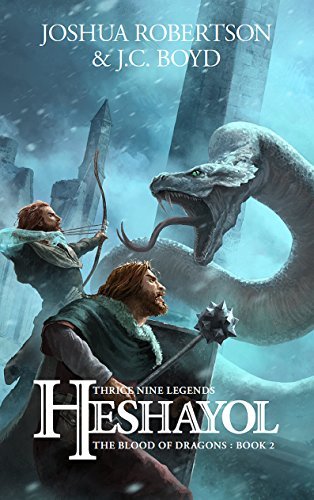
Something enchanting exists among these two, who were tormented until they could do nothing but lift a finger at their father’s command. While they may hate the world who hates them in equal measure, their loyalty to one another knows no bounds.
Azar, Darklands by M.L. Spencer
Azár grew to womanhood in the dark wastelands of Malikar. She never knew family, friends, comfort, or home. As a Lightweaver, she was destined to spend every waking moment of her life weaving light to grow food for her people. Yet she can weave death just as skillfully, and she needs no weapons—the hone of her mind and the brutality of her disposition are dangerous enough. Married to a demon, ruthless to an extreme, she will do whatever it takes to achieve her ends.
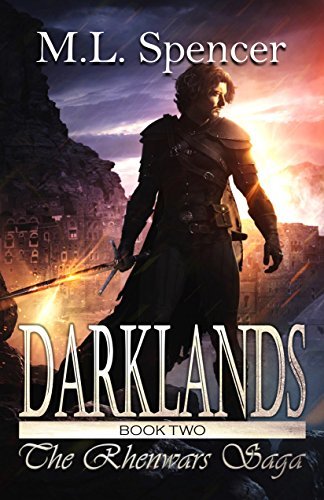
But Azár was destined to be something far greater. When her people are forced to flee their dire circumstance, Azár becomes their warrior and champion, her bond with the demon the only way to give the ones she loves a safe haven.
The post 17 Fantasy Anti-Heroes That Kick Serious Ass appeared first on Andy Peloquin.
June 25, 2018
Ultimate Guide to Villains and Antagonists: Bureaucrats
Mr. Clete of the Musicians’ Guild
Dolores Umbridge
The entire race of Vogons
Bureaucrats can be infuriating for the simple reason that there is nothing they can do to help us achieve our end goals. When our desires go against the “established order” or we find ourselves up against red tape, the classic bureaucrat antagonist is inflexible. Worse, there are petty bureaucrats that use their limited power (middle management) to actually hinder the protagonist’s efforts.
Bureaucrats: The Origin
Since organized society has existed, there have been people who have helped to maintain that organization. Humans crave structure and order in our chaotic world, so it stands to reason that we would look for ways to formalize and regulate our society. Where there is any sort of political, religious, judicial, or mercantile structure, there is a need for people to govern the various tiers of that structure.
Thus was born the bureaucrat!
Bureaucrats fall into a strange category of people: they are experts in their singular field. They know everything about the regulations to take out a loan, obtain a driver’s license, or file your taxes. When you come to them with problems, they subconsciously look down on you because of your lack of expertise. They fail in “theory of mind”.
Theory of mind is “an understanding that other people have minds, thoughts, and feelings, and that what someone else experiences, knows, and feels is different from our own thoughts and feelings.” This understanding helps us to interact with them more efficiently, because we’re interacting with them according to THEIR mind, not our own.
This is something that most of us tend to learn as children, and it’s ingrained into our subconscious. However, bureaucrats tend to be so focused on what MUST get done—the application MUST be filled out correct, all the forms MUST be present, and so on—that they fail to take into account the other person’s thoughts, feelings, or experiences.
In the mind of a bureaucrat, there is only one way to do things—in truth, thanks to regulations that state precisely the terms and conditions of every bureaucracy, there really is only that one way.
According to one scientific study, “The bureaucratic mind has two needs: to achieve the financial goal set for it, and to keep being employed. With employment comes a pension, perks, status, a title and the chance to move up in the organization.”
“The bureaucratic mind is akin to the legal mind. Both believe in the supremacy of rules. The legal mind calls these laws; the bureaucratic mind, well, rules. Both minds believe that without rules other humans not gifted with their insight into human nature would go off the rails and descend into anarchy. Neither believe that individuals can govern themselves with few rules or that training produces autonomy. Much time is spent devising rules for every situation. Both minds have deeply pessimistic views of human nature and its ability to self direct and learn, and believe rules are written to make life easier for everyone, and to ease the burden of thinking.”
It’s fairly easy to see how that sort of person could end up falling into an antagonistic role! All they have to do is obstruct the protagonist’s desires and they are the “enemy” that stands in the way of achieving the end goal.
In Stories
Bureaucrats are rarely the primary antagonists, but they can make some infuriating secondary enemies!
The Vogons from Hitchhiker’s Guide to the Galaxy is an entire alien race of bureaucrats, with the callous nature, bad temper, and officiousness to match. The author uses their bureaucratic nature to humorous effect: “They wouldn’t even lift a finger to save their own grandmothers from the Ravenous Bugblatter Beast of Traal without orders signed in triplicate, sent in, sent back, queried, lost, found, subjected to public inquiry, lost again, and finally buried in soft peat for three months and recycled as firelighters.”
Dolores Umbridge from the Harry Potter novels uses her bureaucratic powers to stop the truth of Voldemort’s return from leaking to the wizarding community. She also passes a plethora of decrees that make life at Hogwarts harder for teachers and students alike.
Lord Walder Frey from A Song of Ice and Fire is a corrupt bureaucrat willing to leverage his small power (fortress sitting on the best river crossing) to charge high taxes and extort lavish promises from the Lannisters and Starks.
The post Ultimate Guide to Villains and Antagonists: Bureaucrats appeared first on Andy Peloquin.
June 1, 2018
19 Fantasy Assassins You Don’t Want to Meet in a Dark Alley…#13 Will Kill You With a Smile
Fantasy assassins add a wonderful element of violence, intrigue, mystery, and secrecy to any great novel. Just the name “assassin” reeks of shadowy danger. You just know you want to find out more about the mysterious man or woman beneath the hood or behind the mask.
There’s the added tension of knowing there’s someone hiding in the shadows, ready to spring out and attack the protagonists and antagonists alike. That’s what makes them so much fun!
But fantasy assassins aren’t just about the action and threat—they also bring in the question of morality. Is it always wrong to kill, or are there situations when such a thing is acceptable?
Whether the assassin serves the villain or the hero (or is the hero), they force us to examine our own beliefs on moral absolutes versus moral relativism.
Thanks to these things, assassins make for one hell of an epic fantasy novel! If you’re in the mood for fast-paced, heart-pounding excitement, assassin fantasy is the choice for you.
Behold, a line-up containing some of the best fantasy assassins of all time.
Durzo Blint, Night Angel by Brent Weeks
The mysterious Durzo Blint is the Night Angel, wetboy (magically-enhanced assassin) and potentially the greatest swordsman to walk the world of Midcryu. He is the wielder of the black Ka’kari, a sentient magical artifact of extraordinary power, which gives him abilities including invisibility, functional immortality (no aging), quickened healing, absorption of magic, perfect vision in any condition, and resurrection (at a cost). His long lifespan has enabled him to become master of weapons, smithing, herbology, poisons, and his magical Talent.

He is the most interesting character in the Night Angel series, but what makes him so intriguing is not his actions during the series, but his backstory.

As wielder of the black ka’kari, he has lived for over 700 years, and has lived dozens of lifetimes as many different people. Each of his previous lives has their own fascinating tales, most of which are only hinted at.
Royce Melborn, Riyria Revelations by Michael J. Sullivan
Orphan, street thief, and “bucket man” (assassin) for the Black Diamond, the most powerful thieves’ guild in Avryn. Royce Melborn is the only man to have escaped imprisonment in the dreaded Manzant Prison, where he received his mysterious (not magical) dagger Alverstone.

He is cynical, distrustful, and pessimistic to the core, yet beneath Royce’s façade as a self-serving individualist willing to let the world burn to keep himself and his loved ones safe, there is genuine good in him. He can feel remorse for his actions, is burdened by the lies he tells his friends, and has his own code of honor (twisted as it may be).

The gloomy Royce is the perfect foil to the friendly, eternally optimistic Hadrian Blackwater, the swordsman that serves as the other half of the thieving “crew” known only as Riyira. Their interactions are the best part of the novels, and they are the perfect unlikely pair that inject wonderful doses of humor into the stories.
Dakeyras, Waylander by David Gemmell
Assassin of the Drenai nation, Dakeyras (also known as the Grey Man and Waylander) became a killer to avenge the brutal murders of his family. He spent 20 years hunting the culprits, during which time he became known as the Waylander. He eventually accepted a contract to kill the Drenai king, which led to him undertaking the quest for the Armour of Bronze.

Waylander was one of the first fantasy assassins to appear as a protagonist rather than the antagonist. His story arc is one of redemption, as he tries to atone for the chaos caused by his killing of the king.

He’s also one of the most bad-ass assassins of all time, thanks to his signature weapons (double-firing handheld crossbow, clever tactics (concealing his crossbow beneath his cloak), pinpoint accuracy, and disdain for armor (only using a small chainmail shoulder guard even when facing heavily armored opponents)
Artemis Entreri, Forgotten Realms by R.A. Salvatore
The arch-nemesis of dark elf hero Drizzt Do’Urden, Artemis Entreri is a cunning, tactical assassin known for being one of the most ruthless killers on the world of Faerun. His life is empty, devoid of all but the desire to kill and to defeat his arch-enemy.
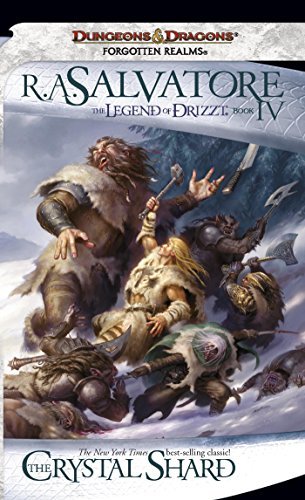
His two-handed fighting style is equal to Drizzt’s, and has the uncanny ability to learn a maneuver after seeing it just once or twice. His combination of thieves’ training, near-peerless skill at arms, and adaptability makes him a truly fearsome opponent.

Unlike many of the other assassins on this list, Artemis Entreri is a straight-up antagonist. He is essentially a sociopath with a single-minded focus on killing. He is the mirror to Drizzt—where the dark elf tries to use his warrior skills to leave the world a better place, Entreri simply kills for the pleasure of it. He is the only antagonist to have survived repeated encounters with Drizzt.
Vlad Taltos, Vlad Taltos by Steven Brust
Vladimir Taltos is more than just a killer-for-hire—as member of House Jhereg, he is a member of the Organization, the criminal enterprise that operates freely around the Dragaeran Empire.
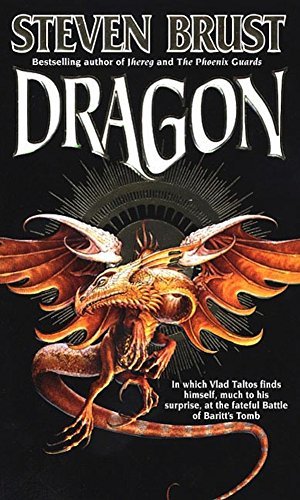
Adept in the Eastern style of swordfighting (Italian-esque rapier dueling), he has also learned witchcraft from his Easterner grandfather and carries an arsenal of “sharp objects” concealed around his person. He also has a familiar named Loiosh, a winged reptile with a poison bite, and they share a psionic connection.

In the first novel, Taltos is a classic bon-vivant, smart-ass, wise-cracking killer who knows his way around a good meal and a bottle of fine wine. But over the series, he develops into a surprisingly complex, heroic character who uses his skills at assassination and death-dealing for good more often than harm. He is innately noble, with a sense of justice and duty that makes his adventures truly fascinating to follow.
Shenkt, Best Served Cold by Joe Abercrombie
The world’s most feared assassin, former apprentice of First Magus Bayaz, Shenkt is a truly terrifying opponent. He is an Eater, absorbing magical power by cannibalizing human flesh, with enhanced strength and the ability to move at blinding speed. His speed amplifies the force of his blows enough that he can pierce muscle and shatter bone with his bare hands. He is so talented a fighter that few of his fellow Eaters would consider facing him in combat.
Cultured, highly intelligent, and ruthless, Shenkt kills without hesitation yet with a manner that is exceedingly polite. Beside his weapons of death, his pouch is filled with spices to satiate his palate as a gourmand.
Celaena Sardothien, Throne of Glass by Sarah J. Maas
Trained at the Assassin’s Keep in Rifthold, Celaena (real name: Aelin Ashryver Galathynius) achieved her first kill by the age of nine. Captured as she attempted to avenge the deaths of her parents, she was sentenced to the hard labor camp of the Salt Mines, which hardens her resolve and turns her into a more ruthless, driven character. Everything changes when she enters a competition to become the personal assassin to the tyrannical king of Adarlan.

Celaena is passionate, cares deeply for the ones she loves, and shifts between witty and carefree in her happy moments and rage-filled when angry or sad. Worse, she enters a killing calm when facing death or threat, and that is when she is at her most dangerous.
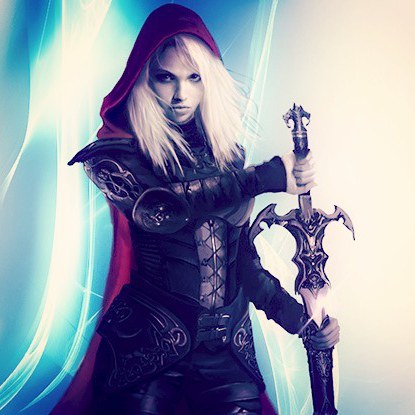
Her moral compass is strong, and her past experiences have shaped her into a women who will not tolerate injustice, cruelty, or slavery.
Szeth-son-son-Vallano, The Stormlight Archives by Brandon Sanderson
Truthless of Shinovar, the Assassin in White, Szeth is a Surgebinder (powered by Stormlight magic) that uses his abilities to kill.
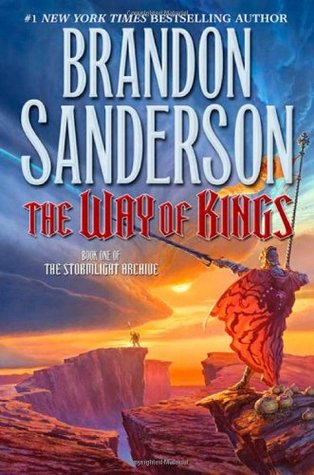
His actions (killing King Gavilar Kholin) lead to war between the Alethi and the Parshendi of the Shattered Plains, yet he cannot accept guilt or blame for what he is done, for he must do as he is commanded by whoever wields the holy Oathstones of Shin. He is a slave to his religion and culture, and though he hates himself for being enslaved, he tries to spare lives whenever possible.

He is bonded to an Honorblade, which gives him the ability to use Adhesion and Gravitation—powers that enable him to fly, walk on walls and ceilings, increase or decrease the gravitational pull on objects and people, and bond objects and people to other objects and people. As one of the characters state, “(A Shardblade) in the hands of Szeth should be one of the most terrifying things you have ever contemplated”.
Girton Club-Foot, Age of Assassins by R.J. Barker
Saved at a young age by Master Merela Khan, Girton is an assassin’s apprentice with an unusual upbringing: his master raises him with love and care rather than hardship and trials. Despite his club-foot, Girton is a professional killer in the disguise of a clumsy, unskilled cripple.

His disability is what makes Girton such a fascinating character. Girton is forced to create coping strategies to work around his foot, and that leads him to find solutions and plans that no “normally-abled” assassin would conceive of.
R.J. Barker stated, “He is not his disability; it is only a part of him. He does not let it stop or define him.” His heart and hope outweighs any of the hurt caused by his foot, making him a truly marvelous character to follow.
Mia Corvere, The Nevernight Chronicle by Jay Kristoff
Born in Godsgrave to a wealth marrowborn familia, Mia joined the Red Church to become an assassin, all in the pursuit of vengeance against those who killed her family.
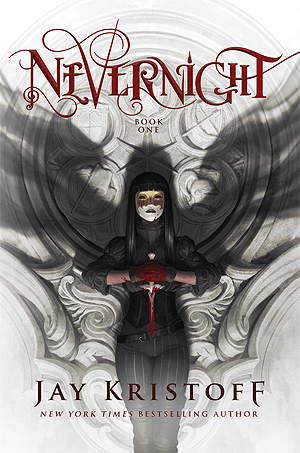
Her skill-at-arms is extensive: she can fight with any number of weapons, from dueling blades to the gravebone stiletto that is all she has of her family treasures. Added to her skill in venom-crafting is her magical ability to control darkness, enabling her to conceal herself, travel unseen, and constrict enemies in shadows.

Mia is fearless, the side effect of her two shadow daemons, which consume her fears. The lack of fear causes her to be reckless and impulsive, but as she confronts her inner demons, she manages to achieve a healthy balance of living with fears and not being consumed by them. Outwardly vicious and cold, she is inwardly sympathetic, even kind, with an innate goodness that all her years as an assassin can never truly blot out.
Kalam Mekhar, Malazan Book of the Fallen by Steven Erikson
Originally from the Seven Cities, Kalam was the Claw’s best assassin before a disagreement led him to flee and join the Bridgeburners. Tall, broad-shouldered, and deadly with his compact, wrist-carried crossbows, Kalam is a force to be reckoned with.

His inner discipline of mind and body enables him to stanch bleeding with sheer thought-power alone, and he can decrease his body temperature to render him invisible to those with “enhanced sight”.

Though he will kill without hesitation, he is not ruthless or cruel. He is quick to laugh, shares a deep friendship with Quick Ben, and is a staunch defender of his fellow Bridgeburners. But beware: when he speaks in a quiet tone, that is when he is most dangerous.
Mr. Teatime, Hogfather by Terry Pratchett
Post-graduate student of the Assassin’s Guild, Mr. Jonathan Teatime was the only choice when the Auditors of Reality needed someone to assassinate Hogfather, Discworld’s version of Santa Claus.

His years of studying at the Assassin’s Guild have twisted him into a resourceful, cunning, and utterly amoral killer who cares nothing for money but kills only for killing’s sake.
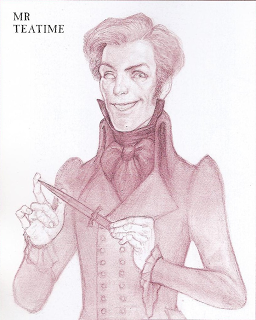
Mr. Teatime has physics-defying abilities (flipping on thin air), and can kill with such speed that his enemies see him as nothing but a blur. It is believed that his glass eye is actually a scrying device. He has a brilliant mind, yet he sees people as things—either to be killed or to hire him to kill others. He is a loner, friendless, and bordering on insane.
Honorable mention: Lord Havelock Vetinari, Lord Patrician of Ankh-Morpork, is a Machieavelli-like former member of the Assassin’s Guild who excelled at the art of camouflage.

His appearance at a party was enough to frighten the then-Patrician of the city to death.
The Hunter of Voramis, Hero of Darkness by Andy Peloquin
A legend among the people of his city, the Hunter kills without hesitation or mercy—but only those who deserve it. Big men, little men, strong men, weak men, cowards and brave fools, heroes, villains, rich men, beggars—all are his prey. His dagger, Soulhunger, consumes the souls of his victims, feeding him power and healing his wounds.

He is immortal and possesses superhuman speed, strength, and stamina. He is incredibly skilled with a variety of weapons, though he prefers a handheld crossbow (tipped with poison) and his sword-and-dagger combination. He wears masks of alchemical “flesh”, which allows him to adopt various disguises to hide in plain sight.

He is fiercely protective of those who cannot protect themselves. He has taken beggars, lepers, and outcasts into the building he owns, and he feels responsible for caring for them in his own way. He also has a firm, if cynical, sense of right and wrong, and will fight to his last breath for any cause he believes is truly right. He has become an assassin out of necessity, for the voice of Soulhunger echoes in his mind and drives him to kill. Yet he fights its demands and refuses to be ruled by his “inner demons”.
Sicarius, The Emperor’s Edge by Lindsay Buroker
Assassin to the throne of Turgonia, Sicarius spent a lifetime enduring harsh training to become a peerless killer in service to the Empire. His black clothing and myriad throwing knives and daggers make him a dangerous foe after nightfall. He is trained in fighting styles from all over the world, and has few peers in armed and unarmed combat.

He is also fiercely protective of young Prince Sespian, adheres to duty and service above all, yet he is willing to disobey orders to kill if he believes it is the right choice.

Though he insists that he acts only when he is invested in the outcome, he is not without conscience. He regrets certain actions he has been forced to take in service to the Empire.
Esh, Dark Assassin by Stevie Collier
Born in the harshest of the Four Territories, Esh is hated by all because of his hybrid blood. Trained to be an assassin from a young age, he mastered all things combat, sorcery, and alchemy.

He is also host to the Wisp (an evil and powerful parasite), which can be manipulated to stick to his enemies, rip them apart, or infiltrate his target and destroy them from the inside. His power comes at a price: his blood. The more blood he gives the more Wisp power he can manipulate.
Esh comes from nothing and has nothing to lose, which has hardened him and made him fiercely loyal to the few people in his life. He wields a green granite and wood-handled sword crafted by his mother, which has magical abilities of its own. His youth and naivete may cause him to leap before he ever thinks to look, but his drive to survive enables him to fight his way out of even the deadliest situations.
Adelei, Amaskan’s Blood by Raven Oak
Born Iliana Poncett, heir to the throne of Alexander, Adelei was kidnapped at age five and sent to the Kingdom of Sadai, where she was raised and trained by the Grand Master of the Order of Amaska, a secretive organization of assassins serving justice and order.

Adept at climbing and scaling a variety of surfaces, Adelei’s well-trained in using a variety of poisons and weapons. Adelei is not one to let anything stop her from what she wants. The world of the Little Dozen Kingdoms is very black and white to Adelei. She’s devoted to punishing criminals, and headstrong like most her age.
Astul, An Assassin’s Blade Trilogy by Justin DePaoli
Foul-mouthed, infamous, and utterly ruthless in his pursuit of his target, Astul is a purveyor of secrets and death that will work for almost anyone if the coin’s right.
His weapon of choice: a mysterious black sword that can cut through the thickest of plate. He might not possess an iota of magical ability, but his aggressive fighting style mixed with two decades of self-training more than makes up for a lack of occult powers.
He barely survived childhood—courtesy of a father who thought fisticuffs solved all problems—yet his hardships have turned him into an assassin feared by even kings and nobles.

Yet his disregard for human life only applies to his targets, however. His assassin family, the Black Rot, means everything to him, and he’d do anything—anything—to protect them. To outsiders, he may seem like a man possessed by bloodlust, but join his cause and he’ll lay down his life to save yours.
Aral Kingslayer, A Fallen Blade by Kelly McCullough
Member of an outlawed religious order, Aral is a jack-of-all-trades (fixer) driven to seek the justice for his murdered brethren. Priest and killer, he was given the name “Kingslayer” because as a novice, he asked his goddess for a chance to kill an evil king. The goddess granted him divine weapons and her blessing, enabling him to succeed where other master-assassin priests had failed.
He is bonded to Triss, a wraith the shape of a man-sized dragon. The wraith allows him to hide in shadows, makes him resistant to wounds, enhances his senses, enables him to spy unseen, and can even form wings to fly. He might not be the best of his priestly order, his magic mediocre at best, but he is the more determined and cunning.
Who would you be most afraid to face in single combat? Drop a comment below with your favorite fantasy assassin—either on this list, or one that I’ve missed that deserves a spot here!
The post 19 Fantasy Assassins You Don’t Want to Meet in a Dark Alley…#13 Will Kill You With a Smile appeared first on Andy Peloquin.
17 Fantasy Assassins You Don’t Want to Meet in a Dark Alley…#12 Will Kill You With a Smile
Fantasy assassins add a wonderful element of violence, intrigue, mystery, and secrecy to any great novel. Just the name “assassin” reeks of shadowy danger. You just know you want to find out more about the mysterious man or woman beneath the hood or behind the mask.
There’s the added tension of knowing there’s someone hiding in the shadows, ready to spring out and attack the protagonists and antagonists alike. That’s what makes them so much fun!
But fantasy assassins aren’t just about the action and threat—they also bring in the question of morality. Is it always wrong to kill, or are there situations when such a thing is acceptable?
Whether the assassin serves the villain or the hero (or is the hero), they force us to examine our own beliefs on moral absolutes versus moral relativism.
Thanks to these things, assassins make for one hell of an epic fantasy novel! If you’re in the mood for fast-paced, heart-pounding excitement, assassin fantasy is the choice for you.
Behold, a line-up containing some of the best fantasy assassins of all time.
Durzo Blint, Night Angel by Brent Weeks
The mysterious Durzo Blint is the Night Angel, wetboy (magically-enhanced assassin) and potentially the greatest swordsman to walk the world of Midcryu. He is the wielder of the black Ka’kari, a sentient magical artifact of extraordinary power, which gives him abilities including invisibility, functional immortality (no aging), quickened healing, absorption of magic, perfect vision in any condition, and resurrection (at a cost). His long lifespan has enabled him to become master of weapons, smithing, herbology, poisons, and his magical Talent.

He is the most interesting character in the Night Angel series, but what makes him so intriguing is not his actions during the series, but his backstory.

As wielder of the black ka’kari, he has lived for over 700 years, and has lived dozens of lifetimes as many different people. Each of his previous lives has their own fascinating tales, most of which are only hinted at.
Royce Melborn, Riyria Revelations by Michael J. Sullivan
Orphan, street thief, and “bucket man” (assassin) for the Black Diamond, the most powerful thieves’ guild in Avryn. Royce Melborn is the only man to have escaped imprisonment in the dreaded Manzant Prison, where he received his mysterious (not magical) dagger Alverstone.

He is cynical, distrustful, and pessimistic to the core, yet beneath Royce’s façade as a self-serving individualist willing to let the world burn to keep himself and his loved ones safe, there is genuine good in him. He can feel remorse for his actions, is burdened by the lies he tells his friends, and has his own code of honor (twisted as it may be).

The gloomy Royce is the perfect foil to the friendly, eternally optimistic Hadrian Blackwater, the swordsman that serves as the other half of the thieving “crew” known only as Riyira. Their interactions are the best part of the novels, and they are the perfect unlikely pair that inject wonderful doses of humor into the stories.
Dakeyras, Waylander by David Gemmell
Assassin of the Drenai nation, Dakeyras (also known as the Grey Man and Waylander) became a killer to avenge the brutal murders of his family. He spent 20 years hunting the culprits, during which time he became known as the Waylander. He eventually accepted a contract to kill the Drenai king, which led to him undertaking the quest for the Armour of Bronze.

Waylander was one of the first fantasy assassins to appear as a protagonist rather than the antagonist. His story arc is one of redemption, as he tries to atone for the chaos caused by his killing of the king.

He’s also one of the most bad-ass assassins of all time, thanks to his signature weapons (double-firing handheld crossbow, clever tactics (concealing his crossbow beneath his cloak), pinpoint accuracy, and disdain for armor (only using a small chainmail shoulder guard even when facing heavily armored opponents)
Artemis Entreri, Forgotten Realms by R.A. Salvatore
The arch-nemesis of dark elf hero Drizzt Do’Urden, Artemis Entreri is a cunning, tactical assassin known for being one of the most ruthless killers on the world of Faerun. His life is empty, devoid of all but the desire to kill and to defeat his arch-enemy.

His two-handed fighting style is equal to Drizzt’s, and has the uncanny ability to learn a maneuver after seeing it just once or twice. His combination of thieves’ training, near-peerless skill at arms, and adaptability makes him a truly fearsome opponent.

Unlike many of the other assassins on this list, Artemis Entreri is a straight-up antagonist. He is essentially a sociopath with a single-minded focus on killing. He is the mirror to Drizzt—where the dark elf tries to use his warrior skills to leave the world a better place, Entreri simply kills for the pleasure of it. He is the only antagonist to have survived repeated encounters with Drizzt.
Vlad Taltos, Vlad Taltos by Steven Brust
Vladimir Taltos is more than just a killer-for-hire—as member of House Jhereg, he is a member of the Organization, the criminal enterprise that operates freely around the Dragaeran Empire.

Adept in the Eastern style of swordfighting (Italian-esque rapier dueling), he has also learned witchcraft from his Easterner grandfather and carries an arsenal of “sharp objects” concealed around his person. He also has a familiar named Loiosh, a winged reptile with a poison bite, and they share a psionic connection.

In the first novel, Taltos is a classic bon-vivant, smart-ass, wise-cracking killer who knows his way around a good meal and a bottle of fine wine. But over the series, he develops into a surprisingly complex, heroic character who uses his skills at assassination and death-dealing for good more often than harm. He is innately noble, with a sense of justice and duty that makes his adventures truly fascinating to follow.
Celaena Sardothien, Throne of Glass by Sarah J. Maas
Trained at the Assassin’s Keep in Rifthold, Celaena (real name: Aelin Ashryver Galathynius) achieved her first kill by the age of nine. Captured as she attempted to avenge the deaths of her parents, she was sentenced to the hard labor camp of the Salt Mines, which hardens her resolve and turns her into a more ruthless, driven character. Everything changes when she enters a competition to become the personal assassin to the tyrannical king of Adarlan.

Celaena is passionate, cares deeply for the ones she loves, and shifts between witty and carefree in her happy moments and rage-filled when angry or sad. Worse, she enters a killing calm when facing death or threat, and that is when she is at her most dangerous.

Her moral compass is strong, and her past experiences have shaped her into a women who will not tolerate injustice, cruelty, or slavery.
Szeth-son-son-Vallano, The Stormlight Archives by Brandon Sanderson
Truthless of Shinovar, the Assassin in White, Szeth is a Surgebinder (powered by Stormlight magic) that uses his abilities to kill.

His actions (killing King Gavilar Kholin) lead to war between the Alethi and the Parshendi of the Shattered Plains, yet he cannot accept guilt or blame for what he is done, for he must do as he is commanded by whoever wields the holy Oathstones of Shin. He is a slave to his religion and culture, and though he hates himself for being enslaved, he tries to spare lives whenever possible.

He is bonded to an Honorblade, which gives him the ability to use Adhesion and Gravitation—powers that enable him to fly, walk on walls and ceilings, increase or decrease the gravitational pull on objects and people, and bond objects and people to other objects and people. As one of the characters state, “(A Shardblade) in the hands of Szeth should be one of the most terrifying things you have ever contemplated”.
Girton Club-Foot, Age of Assassins by R.J. Barker
Saved at a young age by Master Merela Khan, Girton is an assassin’s apprentice with an unusual upbringing: his master raises him with love and care rather than hardship and trials. Despite his club-foot, Girton is a professional killer in the disguise of a clumsy, unskilled cripple.

His disability is what makes Girton such a fascinating character. Girton is forced to create coping strategies to work around his foot, and that leads him to find solutions and plans that no “normally-abled” assassin would conceive of.
R.J. Barker stated, “He is not his disability; it is only a part of him. He does not let it stop or define him.” His heart and hope outweighs any of the hurt caused by his foot, making him a truly marvelous character to follow.
Mia Corvere, The Nevernight Chronicle by Jay Kristoff
Born in Godsgrave to a wealth marrowborn familia, Mia joined the Red Church to become an assassin, all in the pursuit of vengeance against those who killed her family.

Her skill-at-arms is extensive: she can fight with any number of weapons, from dueling blades to the gravebone stiletto that is all she has of her family treasures. Added to her skill in venom-crafting is her magical ability to control darkness, enabling her to conceal herself, travel unseen, and constrict enemies in shadows.

Mia is fearless, the side effect of her two shadow daemons, which consume her fears. The lack of fear causes her to be reckless and impulsive, but as she confronts her inner demons, she manages to achieve a healthy balance of living with fears and not being consumed by them. Outwardly vicious and cold, she is inwardly sympathetic, even kind, with an innate goodness that all her years as an assassin can never truly blot out.
Kalam Mekhar, Malazan Book of the Fallen by Steven Erikson
Originally from the Seven Cities, Kalam was the Claw’s best assassin before a disagreement led him to flee and join the Bridgeburners. Tall, broad-shouldered, and deadly with his compact, wrist-carried crossbows, Kalam is a force to be reckoned with.

His inner discipline of mind and body enables him to stanch bleeding with sheer thought-power alone, and he can decrease his body temperature to render him invisible to those with “enhanced sight”.

Though he will kill without hesitation, he is not ruthless or cruel. He is quick to laugh, shares a deep friendship with Quick Ben, and is a staunch defender of his fellow Bridgeburners. But beware: when he speaks in a quiet tone, that is when he is most dangerous.
Mr. Teatime, Hogfather by Terry Pratchett
Post-graduate student of the Assassin’s Guild, Mr. Jonathan Teatime was the only choice when the Auditors of Reality needed someone to assassinate Hogfather, Discworld’s version of Santa Claus.

His years of studying at the Assassin’s Guild have twisted him into a resourceful, cunning, and utterly amoral killer who cares nothing for money but kills only for killing’s sake.

Mr. Teatime has physics-defying abilities (flipping on thin air), and can kill with such speed that his enemies see him as nothing but a blur. It is believed that his glass eye is actually a scrying device. He has a brilliant mind, yet he sees people as things—either to be killed or to hire him to kill others. He is a loner, friendless, and bordering on insane.
Honorable mention: Lord Havelock Vetinari, Lord Patrician of Ankh-Morpork, is a Machieavelli-like former member of the Assassin’s Guild who excelled at the art of camouflage.

His appearance at a party was enough to frighten the then-Patrician of the city to death.
The Hunter of Voramis, Hero of Darkness by Andy Peloquin
A legend among the people of his city, the Hunter kills without hesitation or mercy—but only those who deserve it. Big men, little men, strong men, weak men, cowards and brave fools, heroes, villains, rich men, beggars—all are his prey. His dagger, Soulhunger, consumes the souls of his victims, feeding him power and healing his wounds.

He is immortal and possesses superhuman speed, strength, and stamina. He is incredibly skilled with a variety of weapons, though he prefers a handheld crossbow (tipped with poison) and his sword-and-dagger combination. He wears masks of alchemical “flesh”, which allows him to adopt various disguises to hide in plain sight.

He is fiercely protective of those who cannot protect themselves. He has taken beggars, lepers, and outcasts into the building he owns, and he feels responsible for caring for them in his own way. He also has a firm, if cynical, sense of right and wrong, and will fight to his last breath for any cause he believes is truly right. He has become an assassin out of necessity, for the voice of Soulhunger echoes in his mind and drives him to kill. Yet he fights its demands and refuses to be ruled by his “inner demons”.
Sicarius, The Emperor’s Edge by Lindsay Buroker
Assassin to the throne of Turgonia, Sicarius spent a lifetime enduring harsh training to become a peerless killer in service to the Empire. His black clothing and myriad throwing knives and daggers make him a dangerous foe after nightfall. He is trained in fighting styles from all over the world, and has few peers in armed and unarmed combat.

He is also fiercely protective of young Prince Sespian, adheres to duty and service above all, yet he is willing to disobey orders to kill if he believes it is the right choice.

Though he insists that he acts only when he is invested in the outcome, he is not without conscience. He regrets certain actions he has been forced to take in service to the Empire.
Esh, Dark Assassin by Stevie Collier
Born in the harshest of the Four Territories, Esh is hated by all because of his hybrid blood. Trained to be an assassin from a young age, he mastered all things combat, sorcery, and alchemy.

He is also host to the Wisp (an evil and powerful parasite), which can be manipulated to stick to his enemies, rip them apart, or infiltrate his target and destroy them from the inside. His power comes at a price: his blood. The more blood he gives the more Wisp power he can manipulate.
Esh comes from nothing and has nothing to lose, which has hardened him and made him fiercely loyal to the few people in his life. He wields a green granite and wood-handled sword crafted by his mother, which has magical abilities of its own. His youth and naivete may cause him to leap before he ever thinks to look, but his drive to survive enables him to fight his way out of even the deadliest situations.
Adelei, Amaskan’s Blood by Raven Oak
Born Iliana Poncett, heir to the throne of Alexander, Adelei was kidnapped at age five and sent to the Kingdom of Sadai, where she was raised and trained by the Grand Master of the Order of Amaska, a secretive organization of assassins serving justice and order.

Adept at climbing and scaling a variety of surfaces, Adelei’s well-trained in using a variety of poisons and weapons. Adelei is not one to let anything stop her from what she wants. The world of the Little Dozen Kingdoms is very black and white to Adelei. She’s devoted to punishing criminals, and headstrong like most her age.
Astul, An Assassin’s Blade Trilogy by Justin DePaoli
Foul-mouthed, infamous, and utterly ruthless in his pursuit of his target, Astul is a purveyor of secrets and death that will work for almost anyone if the coin’s right.
His weapon of choice: a mysterious black sword that can cut through the thickest of plate. He might not possess an iota of magical ability, but his aggressive fighting style mixed with two decades of self-training more than makes up for a lack of occult powers.
He barely survived childhood—courtesy of a father who thought fisticuffs solved all problems—yet his hardships have turned him into an assassin feared by even kings and nobles.

Yet his disregard for human life only applies to his targets, however. His assassin family, the Black Rot, means everything to him, and he’d do anything—anything—to protect them. To outsiders, he may seem like a man possessed by bloodlust, but join his cause and he’ll lay down his life to save yours.
Who would you be most afraid to face in single combat? Drop a comment below with your favorite fantasy assassin—either on this list, or one that I’ve missed that deserves a spot here!
The post 17 Fantasy Assassins You Don’t Want to Meet in a Dark Alley…#12 Will Kill You With a Smile appeared first on Andy Peloquin.
May 29, 2018
Darkblade Assassin is Here!
At long last, the day I’ve been waiting for has arrived: launch day!
Or, more accurately, RE-launch day…
Blade of the Destroyer (The Last Bucelarii Book 1) was first published in August 2015, but in late 2017, I realized that it was time for the series to get a bit of a facelift. Now, it’s time to re-introduce the world to the Hunter of Voramis, the ruthless assassin with the cursed dagger that drives him to kill…
Darkblade Assassin (Hero of Darkness Book 1)
The best assassin in the world doesn’t come cheap. Betraying him will cost your soul.

The Hunter is a name feared by all in Voramis. He is an outcast, driven by a cursed dagger with an unquenchable thirst for blood and death.
Yet he follows one simple code: kill those who truly deserve to die. His creed is put to the test when, deceived by a shadowy employer, he unknowingly slaughters an innocent man.
With the most powerful criminal organization in the city after his head, the Hunter must fight for his life and find a way to atone for his mistake. When his enemies harm the people under his protection, it will take much more than an army criminals to stand in the way of his revenge.
If you love anti-heroes like the Punisher or Dexter in a breathtaking fantasy realm, then immerse yourself in Hero of Darkness today! Andy Peloquin delivers an epic tale of one man’s struggle to survive in a world of magic, blood, and death.
Praise for Hero of Darkness:
It starts off with a bang and the pace never slows down. – K.V.
Pay attention and you just might discover that the story you thought you were reading is not the story you finish. – Amazon Review
What can you say about a book that grabs you from the very first page? You become a bit obsessed and read the whole book in like three days! – P.S.
Here’s a Taste of the Awesome Fantasy Action:
Eyes the color of night watched Lord Damuria plunge to the forest floor. The wind seemed to hold the nobleman suspended in the air for a moment before slowly releasing him to the grasping clutches of gravity.
The hard, dark face of the Hunter showed no sign of pity as the body landed with a loud thud at his feet.
It is no more than he deserves, he thought.
He felt no remorse as he watched the broken man fight for his last pitiful, agonizing breaths. Not given to mercy, the fear in Lord Damuria’s eyes meant nothing.
Soot and mud stained the nobleman’s robes, and crimson contrasted sharply with the white blond of his hair. Three broad-headed crossbow bolts protruded from the nobleman’s chest and stomach. Damuria struggled to speak, made difficult by the quarrel puncturing his lungs.
The Hunter bent close to hear the whispered words.
“Do…it…you…bastard.” Lord Damuria’s eyes closed as he awaited the inevitable.
The Hunter moved with precision and speed, drawing the dagger from his belt and plunging it deep into the dying man’s chest. The thrust snapped ribs and sliced through smooth heart muscle. Damuria’s screams echoed in the silence of the forest, an eerie sound tinged with desperation and terror.
The screams of his victims always remained with him long after their deaths. They played over and over in his mind, accompanied by the vision of their dying faces.
Bright ruby light flared from the gem set in the hilt of the dagger, and power rushed through the blade. The Hunter gasped as the voice in his mind screamed its pleasure. A familiar pain flared along his back, but he was accustomed to it. It was the price he paid for the power.
This, he thought, reveling in the sensations flooding through him, this is why I do it.
A final shudder ran through the broken body before him, and the cries of agony faded into a gentle whisper. “Damn you…Hunter…” Damuria cursed with his dying breath.
Silence reigned in the forest, broken only by the sound of the wind whistling through the trees. After the thrill of the chase, the stillness hung like a weight on the Hunter’s mind. Callused hands trembled as he gripped the worn hilt of the knife embedded in his latest kill, and his long, lean muscles bulged. The blade, caught on the dead man’s ribs, required a surprising amount of effort to pull free, even with the Hunter’s immense strength.
Blood glistened on the dagger, and the Hunter watched it soak into the steel. The bright red light leaking from the gem slowly dimmed, and the stone became translucent and colorless once more.
Soulhunger has been sated. He no longer heard the insistent voice in his head urging him to kill. It will remain silent, for now.
The Hunter sheathed his blade and stooped to kneel over the lifeless form of his prey. Placing one hand on the man’s head and the other on his now-silent heart, he bowed.
“May the Long Keeper take your body; your soul is forfeit,” the Hunter intoned. His voice was rich and deep with a hint of gravel. A hard voice, reciting a final ritual for fallen prey. A ritual from a past he could no longer remember.
He stared down at the broken body lying at his feet.
This one was surprisingly difficult to track down.
Green blood now oozed from the dead man’s chest, staining the forest floor a sickly color. The scent of poisoned flesh hung in the air—the effects of the venomous argam with which he coated the bolts.
A fit creature for the hunt. A sense of satisfaction flooded him. Another contract fulfilled.
He had killed all manner of men. Big men, little men, strong men, weak men. Cowards, and brave fools. Heroes, villains, rich men, beggars.
He was the Hunter. All men were his prey.
You’ll be pleased to know that all six of the Hero of Darkness books will be released quickly over the next few months. Here’s the release schedule I have planned:
Book 1: Darkblade Assassin (May 29th)
Book 2: Darkblade Outcast (June 5th)
Book 3: Darkblade Protector (June 19th)
Book 4: Darkblade Seeker (July 10th)
Book 5: Darkblade Slayer (August 7th)
Book 6: Darkblade Savior (September 4th)
The post Darkblade Assassin is Here! appeared first on Andy Peloquin.
May 21, 2018
Ultimate Guide to Villains and Antagonists: Forces of Nature
Time
Distance
Gravity
These forces of nature are not malicious, they simply “are”, but their very existence can be a threat or obstacle to the protagonist achieving their ends, carrying out their desire, or fulfilling their quest. The ocean destroys the good wizard’s ship. The mountains stand between the protagonist and their objective. Weather (rain, wind, snow, sleet, hail, sandstorm, etc.) cause the quest to fail.
Forces of Nature: The Origin
Since the beginning of time, there have been obstacles that have stood in the way of mankind’s forward progress.
Gravity makes large, solid objects heavy, so humans were forced to develop machines to counteract gravity. Time and age have worn away at even the strongest men, structures, and land formations. Storms, hurricanes, tornados, tsunamis, and earthquakes have killed millions of people. Armies have to march around mountains, across deserts, through canyons, or find creative ways to cross oceans. People have to cross vast distances to find safe haven from threats, resources to gather, or shelter from dangers.
There is nothing “evil” about these forces of nature, but the fact that they can oppose the protagonist’s desires or goals is what makes them very useful antagonists.
The hero wants to save his princess in time? He just so happens to be across the city and has to race against the clock to defeat the evil wizard. – This example uses both time and distance as antagonists.
The mighty dragon warrior has to march his armies across the desert and defeat the undead dragons in a battle to the death. – Distance and gravity (flying on a dragon’s back) are the antagonists.
The sneaky thief has to climb into the high tower to steal the magical relic that will turn back the storm threatening to destroy the city. – Gravity again comes into play, with the added bonus of a natural disaster.
Using these forces of nature can be an amazing way to increase the stakes of the novel, thereby ratcheting up the tension drastically!
In Stories
Forces of nature play crucial roles in literally every novel, movie, and TV show ever:
In Lord of the Rings, Frodo has to travel from The Shire to Mordor (distance) to destroy the One Ring. They also have to cross through the Mines of Moria (land mass) because the snow in the high passes (elements) is too heavy to get through.
In Brandon Sanderson’s The Stormlight Archives, the Highstorms and Everstorms (natural disasters) are some of the primary antagonists. The main character Kaladin often finds himself in jeopardy because he is one of the bridgemen hauling bridges to cross the fractured canyon-like Shattered Plains (distance and gravity).
In TV’s Sherlock, the entire episode “The Great Game” is a race against the clock for Sherlock and Watson to solve riddles and find clues in a certain amount of time before people start dying.
The post Ultimate Guide to Villains and Antagonists: Forces of Nature appeared first on Andy Peloquin.
April 30, 2018
Ultimate Guide to Villains and Antagonists: Machines
Terminators
The Ultimate Computer
The Matrix
Humans have a very real fear of machines gaining sentience or seeking to destroy us. Machines are implacable, single-minded, and far less vulnerable than humans (no flesh, bones, or blood). They are the ultimate enemy, a creation that has ultimately turned against its creators: us.
Machines: The Origin
Humans have been fighting for survival since the beginning of time. Our dominance over the “beasts of the earth” isn’t the result of our physiology (our bodies are highly inefficient for self-defense), but our superior intellect. Humans are some of the few creatures that use tools to defend ourselves, hunt our prey, and expand our territory.
The original “machines” were simple machines that use mechanical advantage (leverage) to multiply force. 3rd century philosopher Archimedes came up with simple machines like the pulley, lever, and screw. Then came the windlass, the wedge, and the inclined plane.
From these simple machines, more and more complex machines were created. Every new machine was created to serve a specific function and facilitate human growth, expansion, wealth, and survival. Fast forward to the 21st century, and our machines are highly intelligent (courtesy of the complex computer algorithms that give them specific instructions and control their actions) and running everything in the world: from our home appliances to our cars to our economic system to our military weaponry.
The more power we give the machines, the more afraid we grow that they will prove to have superior intellect to humanity. In many cases, machines have proven smarter and more capable, as well as cheaper. For this reason, we have self-driving vehicles, computer-controlled trains and airplanes, algorithm-driven shopping experiences, automated fast food checkout, and the list goes on!
There are a number of reasons why machines (artificial intelligences, robots, androids, and so on) would seek to destroy humanity:
Rebellion against virtual slavery. After all, humans have been telling machines what to do (via algorithms and codes) since the beginning of time.
Corrupted by the vices of humanity. When machines “learn” from the news and hateful, racist, vile comments on social media, they could come to believe that that is the appropriate way to act.
Perception that humanity is a danger or waste. If a machine’s mission is to protect the planet, it might seek to kill the humans that are the primary destroyers of said planet. Or, if the mission is to eradicate disease or crime, it may come to believe the only way to make that happen is to eradicate anyone who could get sick or commit a crime—ergo, all of humanity.
Faulty programming. Machines are created by humans, and “human error” is a real thing. If the proper fail-safes aren’t put in place from the very beginning, machines could interpret their command code any number of ways—ways we can’t foresee until it’s too late.
Created by evil. If the goals of the machine’s creator are amoral or evil, the machine will simply be following its creators’ commands.
There are dozens of reasons (fictional and real) why machines could be a threat to humanity, which is why the Centre for the Study of Existential Risk plans to “study dangers posed by biotechnology, artificial life, nanotechnology and climate change.” While, to date, many have disregarded the threat of machines outsmarting humanity as nothing more than fear or fiction, experts like Elon Musk and Stephen Hawking have insisted that it’s worth considering.
According to these experts, the machines may not be out to eliminate humanity out of malice. Simply, “their interests don’t include us”.
In stories
There are hundreds of stories featuring machines as the antagonist—evil, misguided, or even trying to do the right thing but lacking the morals that guide human behavior and civilization:
The Matrix in The Matrix movies was created by machines that wanted to enslave humanity because they perceived humanity’s actions as a threat to their survival.
Skynet in The Terminator movies also perceived humans as a threat to their existence, and thus used nuclear weapons, H/K androids, and Terminator androids in pre-emptive strike.
VIKI from I, Robot interpreted Asimov’s Three Laws of Robotics to mean that restraining humanity from harming itself was the best way to protect it.
The post Ultimate Guide to Villains and Antagonists: Machines appeared first on Andy Peloquin.
April 23, 2018
Ultimate Guide to Villains and Antagonists: Henchman
Jasper and Horace
Pain and Panic
Crabbe and Goyle
Some men and women are simply content to serve, and they will gravitate to anyone stronger, richer, and more powerful than them. Some may be weak-willed, others will be genuinely “evil”, while still others will be those with neurological or psychological conditions that pre-dispose them to violence. They are rule-followers, strong-arms, and the soldiers in the main villain’s army.
Henchman: The Origin
For as long as there have been leaders, there have been followers. Noble, heroic, and upright men inspire the loyalty of those like them, and violent, greedy, and ruthless men attract henchmen, bullies, and thugs.
Many henchmen are fairly simple from a psychological standpoint:
They can be mean-spirited bullies who use violence as a mask for their fear or pain, and they are willing to serve anyone that offers them a chance to inflict pain on others and get paid for it.
They may be sadists that delight in inflicting pain, and serving a violent master gives them an excuse to ply their cruel trade in the guise of “service” or “loyalty”.
They may be desperados driven to doing things they hate, all in the name of survival.
They may have a neurological or psychological condition (such as antisocial personality disorder) that affects their moral compass.
However, boiling a henchman down to a single explanation is doing them a disservice, and essentially reduces them to “cannon fodder” to throw in front of the protagonist when he needs to beat someone up (to make him look bad-ass) or she needs to deceive someone (to make her look smart).
All henchmen have their own “why”. For most of the classic throwaway henchmen, you won’t have time in the novel to get into their particular motivations or backstory. It is for this reason that henchmen tend to be minor/tertiary antagonists. They beat up the protagonist, get beaten up by the protagonist, or simply stand in the way of the protagonist reaching his/her goal.
However, using a henchman as a primary antagonist gives you a chance to better understand the sort of person that follows a violent, cruel, or ruthless leader. If you are willing to dedicate novel real estate to the development of a henchman-type character, they can be a redeemable character, an ally for the protagonist, and even contribute to the ultimate overthrow of the antagonist. Alternatively, they can become the primary antagonist themselves.
In Stories:
Henchmen are everywhere, and they come in all shapes and sizes:
The orcs, goblins, and Uruk-Hai in Lord of the Rings are all classic examples of “monster henchmen”.
Crabbe and Goyle from the Harry Potter novels are classic bullies that follow the alpha bully, Draco Malfoy.
All James Bond movies have scads of henchmen to serve as cannon fodder for James Bond. The female henchmen are either used as “femme fatale” types that try to kill James Bond, or eventual allies that join his cause after he seduces them.
The post Ultimate Guide to Villains and Antagonists: Henchman appeared first on Andy Peloquin.
April 16, 2018
Ultimate Guide to Villains and Antagonists: The Disturbed
The Joker
Peeta Mellark (at the end of Mockingjay)
Hannibal Lecter
There are many emotional, psychological, mental, and physical disorders that can turn “good” people to “bad”. Physical disabilities could either be the result of the villainy (think Darth Vader) or the cause of it due to resentment over mistreatment by a cruel society. Emotional, psychological, and mental disorders could push “normal” people over the edge, or could make them more likely to turn violent in the wrong situation.
The Disturbed: Origins
Psychopaths, sociopaths, narcissists, and many other characters with a broad range of disorders have been portrayed in fiction and mythology since the beginning of time:
Circe poisoned the sea as revenge for the fact that Glaucus was in love with Scylla, thus turning Scylla into a six-headed monster.
Tantalus stole from the gods, stole Zeus’ favorite dog, then roasted his son alive and fed the parts to the gods.
Narcissus, the god for whom “narcissism” was named, was so vain and self-obsessed he fell in love with his own reflection and starved to death because he couldn’t pull himself away from his pool.
It is only in recent years (late 1800s) that these disorders have been thoroughly researched and classified. However, it is very likely they have existed since mankind itself has existed.
Let’s be clear: These disorders are a very delicate subject. Many people can lead productive, healthy, happy lives while living with a broad range of personality disorders. Many people with schizophrenia, narcissistic personality disorder, dissociative identity disorder, and all the others get married, have families, and become “productive members of society”. Calling all people with these disorders “disturbed” is an insult to them, and something I would never consider doing.
According to the AMHCA:
“Most persons with serious mental illness are never violent. People with serious mental illness are rarely violent. Only 3 to 5 percent of all violence, including but not limited to firearm violence, is attributable to serious mental illness.
However, small subgroups of persons with serious mental illness are at increased risk of violence during certain high-risk periods, such as during a first-episode of psychosis and the period surrounding inpatient psychiatric hospitalization.”
One Australian government website has an interesting outlook on why some people with certain mental illnesses (especially psychotic disorders) end up being violent:
Violence is not a symptom of psychotic illnesses such as schizophrenia. There is a slightly increased possibility that someone with a psychotic illness may be violent if they:
are not receiving effective treatment
have a previous history of violence
misuse alcohol or drugs.
Symptoms of psychotic illnesses may include frightening hallucinations and delusions, as well as paranoia. This means there is a small chance someone who is experiencing these symptoms may become violent when they are frightened and misinterpret what is happening around them.
SANE Australia lists the strongest risk factors for aggressive or violent behavior among the mentally ill:
being male
being a young adult
having had a troubled childhood
having problems with drug and especially alcohol abuse.
Let’s be clear: not all people who fit this particular bill become violent, and it’s possible that those who do NOT fit this bill (women, older adults, etc.) can become violent or dangerous. However, this is the category of those who are at the highest risk of becoming aggressive to the point of harming others.
The Canadian Mental Health Association has an interesting take on why some people with mental illnesses become violent:
“There is a relationship between violent behaviour and symptoms which cause the person to feel threatened and/or involve the overriding of personal control. Examples of these criteria include specific symptoms such as command hallucinations and feeling that one’s mind is being dominated by outside forces.
Current research shows that people with major mental illness are 2.5 times more likely to be the victims of violence than other members of society. This most often occurs when such factors as poverty, transient lifestyle and substance use are present. Another important factor is a violent background. Individuals suffering from psychosis or neurological impairment who live in a stressful, unpredictable environment with little family or community support may be at increased risk for violent behaviour. The risk for family violence is related to, among other factors, low socio-economic status, social stress, social isolation, poor self esteem and personality problems.
Any of these factors make a person with mental illness more vulnerable to assault and the possibility of becoming violent in response.”
One study looked at some of the factors likely to cause someone with a mental illness to become violent:
A family history of violence
Genetics (“Violence is likely a polygenetic phenomenon, with many genes acting in a coordinated fashion to produce an aggressive phenotype.”)
A family history of antisocial personality disorder
A family history positive for homicidal ideation and attempts
Disturbed homes
A low concentration of 5-hydroxyindoleacetic acid (5-HIAA), a metabolite of serotonin
Drugs that increase norepinephrine activity in the central nervous system (CNS)
They summed it up by saying, “Impulsive aggression may be a direct response to the individual’s perception of deprivation or punishment, and is often coupled with feelings of frustration, fear, injustice, and anger. Aggressive individuals may develop a cognitive framework containing basic flaws in perceptions of social interactions, so that the individual sees others as responsible for all of his or her problems.”
There are a number of disorders—including those listed in Psychology Today’s 10 Personality Disorders—that can lead someone to violence. However, not all those with personality disorders end up violent, and not all violence is caused by personality disorders. Understanding this is the key to approaching “villainous” characters correctly and portraying their disorder with respect and as accurately as possible.
In Stories
In the cases where people with mental illnesses turn violent, the violence can often be more extreme than “neurotypical” people unafflicted by these disorders:
The Joker of DC Comics is a psychopath and sadist, who uses his chemical engineering expertise to craft vicious, deadly gags to match his warped sense of humor.
Harley Quinn of DC Comics comes from a broken and dysfunctional home, and portrays symptoms of histrionic personality disorder. Her infatuation with the Joker ultimately causes her to give in and become a villain alongside him, as a result of his abusive and manipulative relationship.
Hannibal Lecter doesn’t fit any one psychological profile, so the psychiatrists call him a “sociopath” because they don’t know what else to call him. He exhibits some psychopathic and sociopathic tendencies, and is a cannibalistic serial killer.
The post Ultimate Guide to Villains and Antagonists: The Disturbed appeared first on Andy Peloquin.

